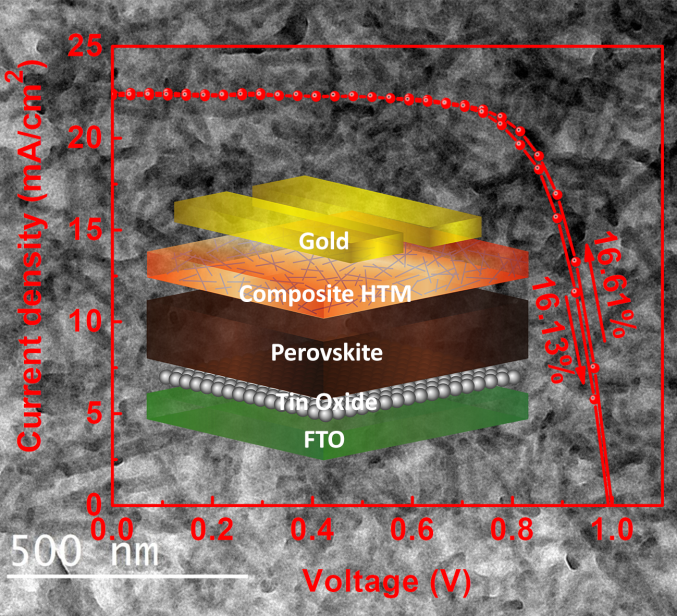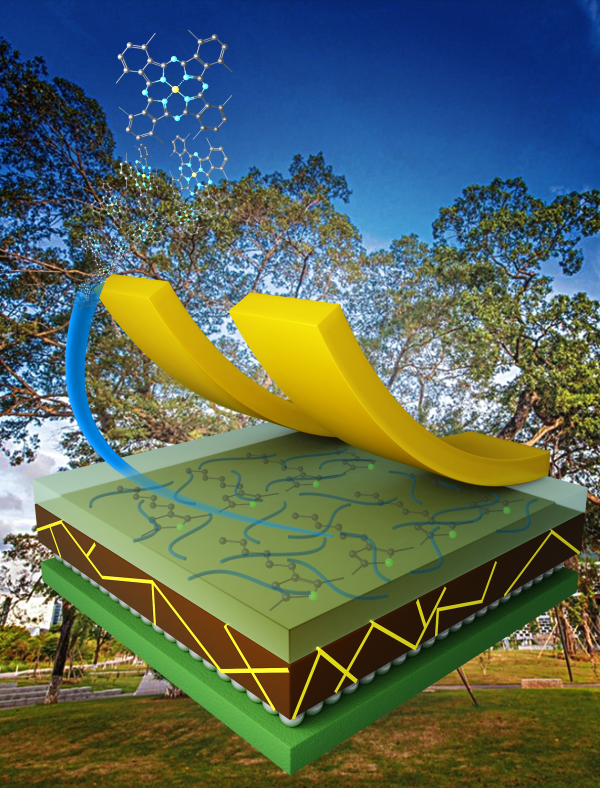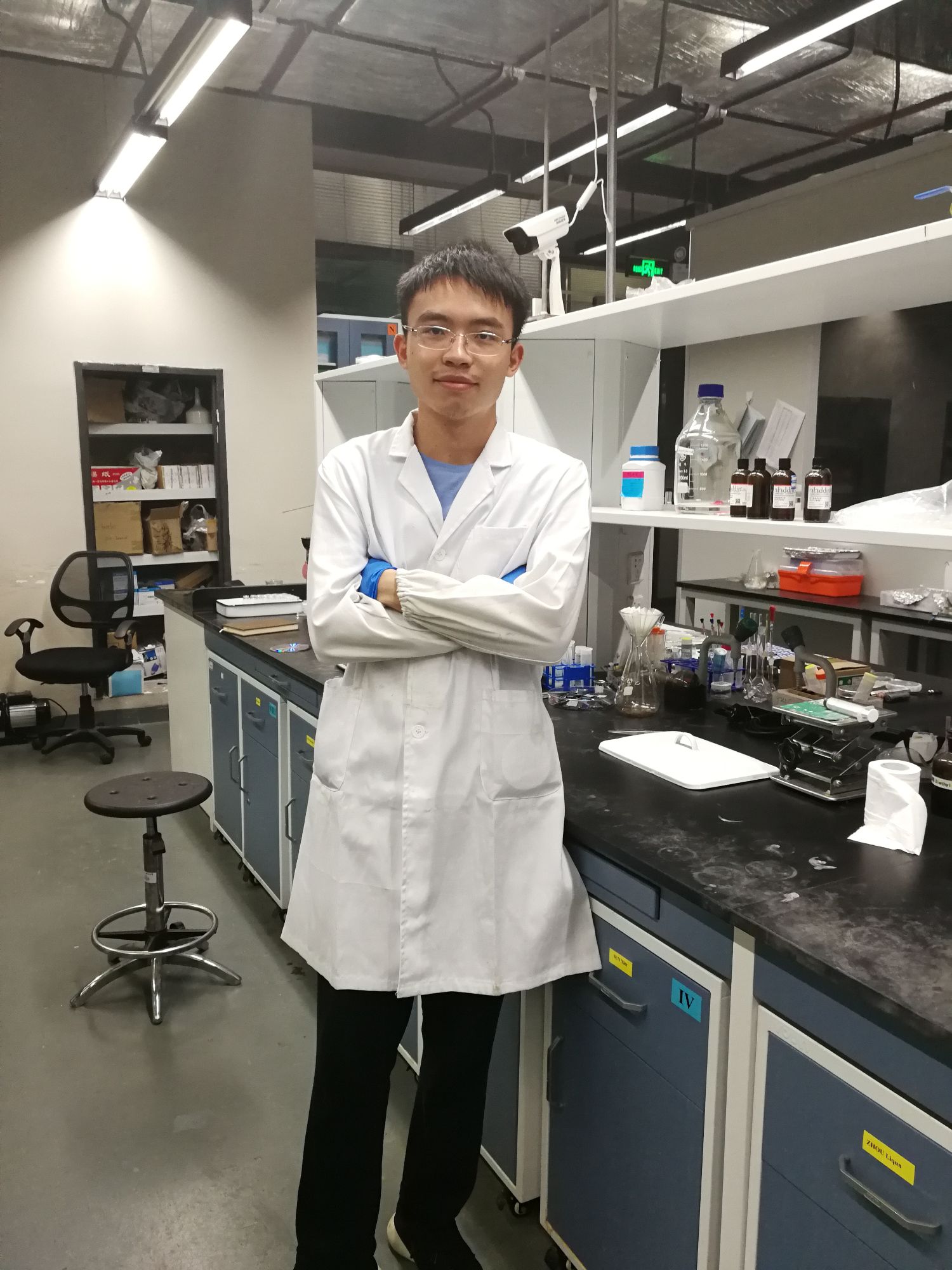Recently, “Solar RRL” and “Catalysis Today,” renowned journals in fields of energy and catalysis, have published two papers by undergraduate student Hu Qiqun. Hu Qiqun joined the research group of Associate Professor Xu Zongxiang from the Department of Chemistry at Southern University of Science and Technology (SUSTech). Hu Qiqun completed the main body of the experiement process and thesis writing, and Associate Professor Xu Zongxiang was the corresponding author.
The paper published in Solar RRL is titled “Phenylthiophene/phthalocyanine nanocomposites as Efficient Hole-Transporting Materials for Perovskite Solar Cells” (P3HT/Phthalocyanine Nanocomposites as Efficient Hole-Transporting Materials for Perovskite Solar Cells).

Photoelectric conversion efficiency diagram of perovskite solar cell based on phthalocyanine nanocrystalline
Energy and environmental issues are two major crises facing humanity at present which have become an area of focus for researchers. Perovskite solar cells are considered to be a photovoltaic device with the enormous potential to solve energy problems. This is due to its unique physical properties, striking photoelectric conversion efficiency and attractive industrial application prospects. However, problems such as device efficiency attenuation (stability) desperately need to be solved for industrial applications. The hole transporting material commonly used in current perovskite solar cell is a relatively expensive spiro-OMeTAD, which needs to be doped with lithium salt to improve the performance of the battery, but at the same time exacerbates the instability of the device. Researchers have long sought to find cheaper and more stable hole transport materials to replace traditional materials.
Copper phthalocyanine is an inexpensive small molecular semiconductor material with excellent photoelectric properties. However, its organic solubility is relatively weak. As a result, it is not conducive to the preparation of photovoltaic devices on an inexpensive solution process. Xu Zongxiang’s research group has developed octamethyl-substituted copper phthalocyanine and prepared nanomaterials from the molecular design level. Through the combination of phthalocyanine nanomaterials and low cost commercialized polymer material polythiophene, the team developed a composite material with higher carrier mobility and environmental stability to realize a solution method. The group has prepared a perovskite solar cell with a photoelectric conversion efficiency of 16.61%, which is higher in efficiency than conventional commercial spiro-OMeTAD. At the same time, the stability of the device is far higher.

Graphene oxide/phthalocyanine nanorod composite hybrid material photocatalyst
The paper published in Catalysis Today is titled “Graphene oxide/N-CuMe2Pc nanorod hybrid nanocomposite as an efficient visible light photocatalyst for aqueous Cr(VI) reduction.”
Hexavalent chromium is toxic to the human body and can invade through the digestive tract, respiratory tract, skin, and mucous membranes. It mainly accumulates in the liver, kidney and endocrine glands of the human body. Hexavalent chromium has a strong oxidizing effect, so chronic poisoning often begins with local damage and gradually develops into irreparable damage. The reduction of hexavalent chromium to non-toxic trivalent chromium can be achieved by photocatalysis. Most existing photocatalysts can only work in the ultraviolet spectrum, and the catalytic performance is low. Phthalocyanine works in the visible light spectrum. By using octamethyl-substituted copper phthalocyanine nanorods and graphene oxide to prepare composite materials, the spectral absorption range of photocatalysts can be effectively improved. The solar energy can be fully utilized, and the charge transfer can be accelerated. It can realize the high-efficiency reduction of hexavalent chromium in aqueous solution, which degrades 97% of the hexavalent chromium in water within two hours of daily sunlight.
Both research works were supported by the Basic Research Development Project of Shenzhen Science and Technology Innovation Committee.

Hu Qiqun joined Xu Zongxiang’s research group and had been mainly engaged in metal phthalocyanine semiconductor material synthesis and optoelectronic device application research. He has participated in research projects as the first author to publish 2 articles, and co-authors published 5 articles.
Related background:
“Solar RRL” is a high-quality journal that quickly publishes leading research on photovoltaic cells and solar energy, focusing on solar photovoltaic cells, photocatalysis, photothermal, photoelectrochemical solar conversion, and other fields. The readers cover academic and industrial materials scientists, physicists, chemists, and engineers. As a member of Advanced Materials, the “Solar RRL” manuscript is also processed by experienced editors of “Advanced Materials,” “Advanced Energy Materials,” “Advanced Functional Materials,” “Small” and other journals, and is the top journal in the energy field.
“Catalysis Today” is a journal of the Chinese Academy of Sciences, focused on the latest results in the field of applied chemistry. It is the top journal in the field of catalysis with an impact factor of 4.667.
Orginal link
https://onlinelibrary.wiley.com/doi/full/10.1002/solr.201800264
https://www.sciencedirect.com/science/article/pii/S0920586118316328
Proofread ByXia Yingying
Photo By